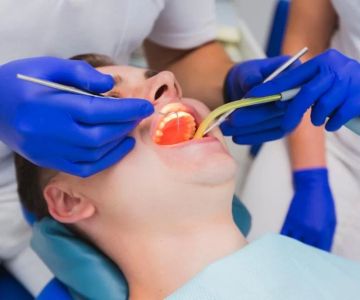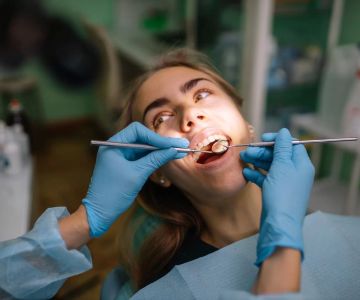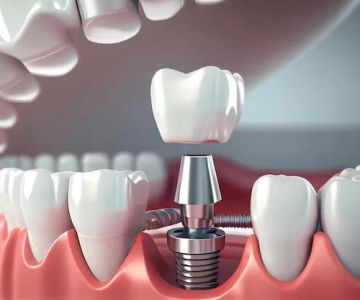Preventing Tooth Decay with Treatments: Effective Methods to Protect Your Teeth
- 1. Understanding Tooth Decay and Its Causes
- 2. Why Preventing Tooth Decay Is Essential
- 3. Dental Treatments That Help Prevent Tooth Decay
- 4. Fluoride Treatments for Cavity Prevention
- 5. Dental Sealants: A Protective Barrier Against Decay
- 6. The Role of Professional Cleanings in Preventing Tooth Decay
- 7. Healthy Habits to Prevent Tooth Decay
- 8. Real-Life Examples: Successful Prevention of Tooth Decay
- 9. Take Action to Protect Your Smile
1. Understanding Tooth Decay and Its Causes
Tooth decay, also known as dental caries, is a common dental problem that occurs when the enamel of your teeth breaks down due to acids produced by bacteria. These bacteria feed on sugars and food particles left on your teeth, which results in plaque buildup. Over time, plaque can lead to cavities, gum disease, and even tooth loss if left untreated.
Several factors contribute to tooth decay, including poor oral hygiene, sugary and acidic foods, dry mouth, and genetics. However, with the right treatments and preventive measures, tooth decay can be avoided or minimized.
2. Why Preventing Tooth Decay Is Essential
Preventing tooth decay is crucial for maintaining not only your oral health but also your overall well-being. Untreated cavities can lead to severe tooth pain, infections, and even tooth loss. Additionally, tooth decay has been linked to other health issues such as heart disease and diabetes, making prevention even more important.
Early intervention and prevention can save you from expensive dental treatments like fillings, root canals, and crowns, which are often necessary once decay has progressed. Regular preventive treatments also help keep your smile healthy, bright, and functional.
3. Dental Treatments That Help Prevent Tooth Decay
Several dental treatments are available to help prevent tooth decay. These treatments, when combined with good oral hygiene and healthy habits, can protect your teeth from the damage caused by decay.
3.1. Professional Cleanings
Regular professional cleanings are an essential part of preventing tooth decay. Your dentist or dental hygienist will remove plaque and tartar buildup that cannot be removed by brushing alone. This helps reduce the risk of cavities and gum disease.
3.2. Fluoride Treatments
Fluoride is a mineral that helps strengthen enamel, making it more resistant to decay. Professional fluoride treatments, which are typically applied in the form of a gel, foam, or varnish, can help remineralize enamel and reduce the risk of cavities.
3.3. Dental Sealants
Dental sealants are thin, protective coatings that are applied to the chewing surfaces of your back teeth. These sealants form a barrier that prevents food particles and plaque from accumulating in the deep grooves of your teeth, which are prone to cavities.
3.4. X-Rays and Early Detection
Regular dental X-rays allow your dentist to spot early signs of tooth decay, even before you notice any symptoms. Early detection means that treatment can be started sooner, which helps prevent more serious decay.
4. Fluoride Treatments for Cavity Prevention
Fluoride is one of the most effective treatments for preventing tooth decay. It works by remineralizing the enamel, reversing early stages of decay, and making teeth more resistant to future damage. Fluoride treatments are usually recommended for children but can benefit adults as well.
Fluoride treatments are available at your dentist’s office and may be applied as a gel, foam, or varnish. You can also use fluoride toothpaste and mouth rinses at home to continue benefiting from fluoride between dental visits.
5. Dental Sealants: A Protective Barrier Against Decay
Dental sealants are especially beneficial for children and adults with deep grooves in their back teeth. These grooves can trap food particles and bacteria, making them more vulnerable to decay. Sealants cover these grooves, preventing bacteria from settling in and causing cavities.
The application of sealants is quick, painless, and can last for several years, making them a cost-effective way to protect your teeth from decay.
6. The Role of Professional Cleanings in Preventing Tooth Decay
Professional cleanings are a key component of any dental prevention plan. Regular cleanings allow your dentist to remove plaque and tartar buildup, which can contribute to tooth decay and gum disease. During the cleaning process, your dentist may also detect early signs of decay or other oral health problems, providing an opportunity for early treatment.
It is generally recommended to have a professional cleaning every six months to ensure that your teeth stay healthy and free of plaque. If you have specific dental concerns or a history of decay, your dentist may recommend more frequent visits.
7. Healthy Habits to Prevent Tooth Decay
In addition to professional treatments, adopting healthy habits at home is essential for preventing tooth decay. Here are some tips for keeping your teeth healthy:
7.1. Brush and Floss Regularly
Brushing your teeth twice a day with fluoride toothpaste and flossing daily are essential habits for preventing decay. These actions remove food particles and plaque from your teeth, reducing the risk of cavities.
7.2. Eat a Tooth-Friendly Diet
Avoid sugary and acidic foods that can contribute to decay. Instead, opt for a balanced diet rich in fruits, vegetables, whole grains, and dairy products to promote strong, healthy teeth.
7.3. Drink Water
Drinking plenty of water throughout the day helps wash away food particles and bacteria, keeping your mouth clean and hydrated.
8. Real-Life Examples: Successful Prevention of Tooth Decay
Take the example of John, a 35-year-old man who had a history of cavities. After starting regular fluoride treatments and using dental sealants on his molars, he significantly reduced his chances of developing new cavities. John also made an effort to visit his dentist every six months for professional cleanings. As a result, he hasn't had a cavity in over five years.
9. Take Action to Protect Your Smile
Preventing tooth decay is easier than you think with the right treatments and habits. By incorporating fluoride treatments, dental sealants, regular cleanings, and a solid oral hygiene routine, you can keep your teeth healthy and decay-free.
Interested in preventing tooth decay with the latest dental treatments? Visit Dentistry Toothtruth to learn more about cavity prevention and schedule an appointment with one of our experts.







 Mark J. Mele, DMD5.0 (86 review)
Mark J. Mele, DMD5.0 (86 review) Allan Neal A DDS5.0 (17 review)
Allan Neal A DDS5.0 (17 review) Dentists of South Pasadena4.0 (124 review)
Dentists of South Pasadena4.0 (124 review) Chesheim Dental Associates4.0 (103 review)
Chesheim Dental Associates4.0 (103 review) Rivers Family Dentistry4.0 (365 review)
Rivers Family Dentistry4.0 (365 review) Kelcey Rhodes DDS3.0 (3 review)
Kelcey Rhodes DDS3.0 (3 review) The Importance of Oral Health Education During Pregnancy for a Healthy Pregnancy
The Importance of Oral Health Education During Pregnancy for a Healthy Pregnancy Best Tips for Brushing Your Teeth Properly for Healthy Gums: Essential Techniques for Oral Health
Best Tips for Brushing Your Teeth Properly for Healthy Gums: Essential Techniques for Oral Health Why Skipping Dental Checkups Can Lead to Bigger Oral Health Problems
Why Skipping Dental Checkups Can Lead to Bigger Oral Health Problems Advantages of Porcelain Dental Restorations
Advantages of Porcelain Dental Restorations How Can Diabetes Cause Tooth and Gum Problems? Preventing and Managing Oral Health Issues
How Can Diabetes Cause Tooth and Gum Problems? Preventing and Managing Oral Health Issues Healthy Habits for Promoting Good Oral Health and Hygiene: Tips for a Healthy Smile
Healthy Habits for Promoting Good Oral Health and Hygiene: Tips for a Healthy Smile